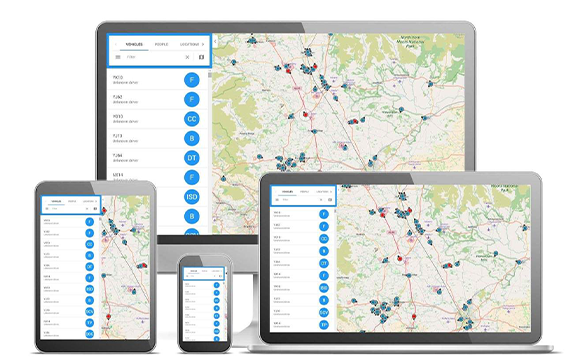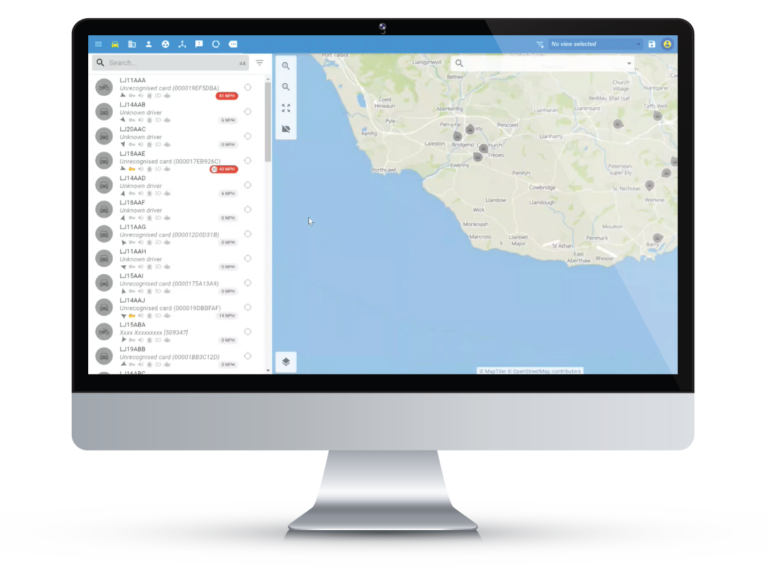Life-saving Data Management
20 February 2023
In emergency services, time is of the essence. The faster a response team can arrive on the scene, the higher the chances of saving lives. By using telematics and real-time data, operational policing can drastically transform the way they respond to emergencies. Using geo-fencing and the data provided by telematics can help dispatchers identify the closest available emergency vehicle and direct it to the scene in a matter of seconds. This can save valuable minutes which can mean the difference between life and death.
Moreover, telematics data can be used to monitor the behaviour of drivers in emergency service fleets. With this data, dispatchers and managers can identify unsafe driving practices, such as excessive speeding or hard braking, and take corrective action to prevent accidents. This can help reduce the risk of injuries and fatalities not only for emergency service personnel but also for the public. A recent Lightbulb pilot showed an improvement in driver scores of over 18% points in only 90 days!
This has also assisted police fleets in managing their insurance costs, by being able to demonstrate that they have an effective driver management programme in place which not only monitors but also manages driver behaviour has led to more cost-effective premiums. It also demonstrates to insurance companies that the police fleets are using telematics data to assess improvement trends which will have a positive impact on future insurance payments.
Telematics data can also be used to optimise vehicle utilisation and lifecycle cost analysis. By tracking the mileage, fuel consumption, and maintenance schedules of emergency vehicles, managers can ensure that each vehicle is used to its maximum potential while minimising maintenance costs. Lightbulbs’ analysis has assisted many fleets to make fleet savings of up to 20% without compromising operational effectiveness through statical analysis. This can also help extend the lifespan of the vehicle, reducing the need for costly replacements.
However, that is only the tip of the iceberg in which telematics can optimise operational policing. Here are some ways in which data can be used to save lives in the police force:
1. Mobilise briefing and tasking
Use telematics to automatically brief officers with crimes that have occurred in their patrol area and provides officers with the intelligence they need to be aware of during the patrol. Briefing and tasking centralises information held in several systems, so officers get ‘one view’ of emerging incidents, initiatives, and tasks. The frictionless speed of the information to the patrol via an easy-to-use app means that operational police officers do not need to return to base to get updates. This increases efficiency and reduces fleet costs; some fleets saw a reduction in ‘return to base’ trips of over 50%.

2. Optimise emergency responses
In emergency situations, every second counts. By using data to optimise emergency response times, police operations can save lives. For example, real-time data from GPS-enabled police vehicles can be used to identify the nearest available unit to the scene of an emergency, reducing response times and increasing the chances of saving lives.
3. Predictive policing
Predictive policing uses data analysis to identify areas and people who are at higher risk of committing crimes or being victims of crimes. By targeting resources in these areas and offering interventions to people at risk, police departments can reduce crime rates and save lives. For example, by identifying high-risk areas for drug-related crimes, police departments can prevent drug overdoses and save lives. A pilot with a large police force saw a reduction of over 30% of nuisance crimes, by redirecting patrols to hotspot areas.
4. Intelligent data sharing
Police departments can save lives by sharing data with other agencies, such as fire departments and emergency medical services. By sharing data on emergency calls, police departments can ensure that emergency responders arrive at the scene of an emergency as quickly as possible, increasing the chances of saving lives.
5. Integrated AI Dashcams
The use of Integrated dashcams is currently in development. This will assist in insurance claims by providing video and image capture to reinforce the incident data recorder data currently available. It can also be used to provide real-time video streams to force control centres so enabling control room supervisors to have a ‘real life’ view of incidents as they unfold. In comparison to using a police helicopter which can cost over £2,000 per hour, this is a very cost-effective way for managers to review ongoing incidents.

In conclusion, the use of telematics and fleet management data can be a game-changer for emergency service fleets. By leveraging the power of real-time data and statistical algorithms, emergency service fleets can improve more than just response times, optimise vehicle utilisation, and decrease costs; it will further improve public safety and save lives.
Want more information?
Get in touch today to find out how you can make your officers more productive.
Contact Us